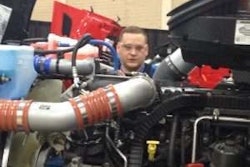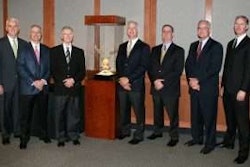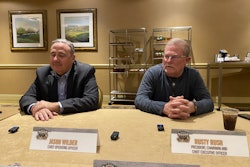If there’s one thing the federal government knows how to create it’s confusion, and few places is that more evident than with the Federal Excise Tax (FET).
The IRS treats a truck as two separate items; a truck chassis and a truck body for FET purposes, and FET applies separately to a truck body and a truck chassis.
“Under IRS rules, a truck body is a separate taxable item,” says Bob Raybuck, Director of Technical Services, NTEA, and FET applies to taxable truck bodies regardless if the chassis is new or used.
“A new replacement truck body mounted on a used chassis is a new truck body for FET purposes,” Raybuck says, “not a part and accessory.”
And if you’re not confused yet, consider this:
“A truck may have a taxable chassis and a non-taxable body or a taxable body on a non-taxable chassis,” Raybuck adds.
“If a body does not fall within a safe harbor, it still may be non-taxable,” Raybuck says. “For bodies that do not fall within a safe harbor, apply the ‘suitable for use’ test to determine if it is taxable.”
For example, by IRS definition a crane is a part and accessory and must be sold with a new taxable article like a truck chassis or truck body to be taxable.
However, if its horizontal reach is more than 25 feet, it is assumed to be a non-taxable part.
“The use portion of the crane test is more important than the length test,” Raybuck says. “If you can show its use function is a work function, you can show it is a non-taxable attachment even though it doesn’t meet the length requirement.”
Cranes particularly used for job site function are considered non-taxable job-site equipment; for example, a crane used to hoist drywall or HVAC equipment to multiple floors of a construction site.
Raybuck recommends dealers get a “statement of use” from customers for all cranes sold with a taxable article.
“Remember the crane’s use is the primary test in determining if it is taxable, not the length of the boom,” he says.
To further muddy the waters, the IRS issued new advice on the taxability of chassis renovations (glider kits) in January, which changed the IRS’s position on the issue and recommended that taxpayers should no longer follow advice from the year before.
“The IRS now suggests that the 75 Percent Rule likely will not apply to many situations in which used components are combined with a glider kit to complete a truck body,” Raybuck says. “The IRS concluded the refurbished components were not articles, and instead determined the taxpayer had manufactured a new article from a combination of new and used automotive components, none of which were articles.”
The IRS sees the truck as manufacturing a new article from a combination of new and used automotive parts, Raybuck adds.
Customers can, however, provide glider kit and replacement components and the company can assemble the components for the customer. In this case, the IRS says the customer has manufactured the vehicle and the customer would be responsible for paying taxes on the truck based on its use.











